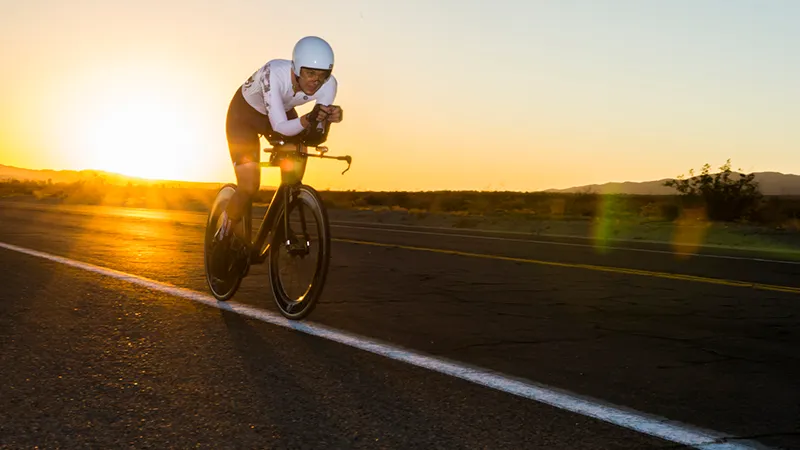Some of us are gluttons for punishment. I raced the 12-hour World Time Trial Championships back in 2016 and had a great experience (well, mostly). While I briefly debated trying the 6- or 24-hour options also on offer, there’s always that looming question: “Could I go farther in the same allotted time?” The only way to find out was to line up once again.
The course: Borrego Springs, California is the venue of choice for a reason. It’s warm late in the year (though this year saw temperatures reach 95 degrees Fahreheit/35 degrees Celsius), has quiet roads with little traffic, and the terrain near town is flat. Racers start on an 18-mile lap and complete as many laps as possible before switching to a 5-mile loop for the last 1.5 hours of racing. Only laps completed within the 6-, 12-, or 24-hour time are counted. Pavement is rough at times.
The equipment goal: Maximize aerodynamics as much as possible without sweltering in the desert heat.
The horse: Canyon’s Speedmax CF 8.0 Di2 with Ultegra Di2, a Rotor 2inPower crank, 1x chainring, AeroCoach AEOX wheels, Vittoria Corsa Speed Open tubeless tires, TriRig Alpha One aerobars and Omega brakes.
While I was happy with my first go at a time trial this long, I knew that this time round I wanted to spend more time on a TT bike in order to better adapt to the position.
Bike set up
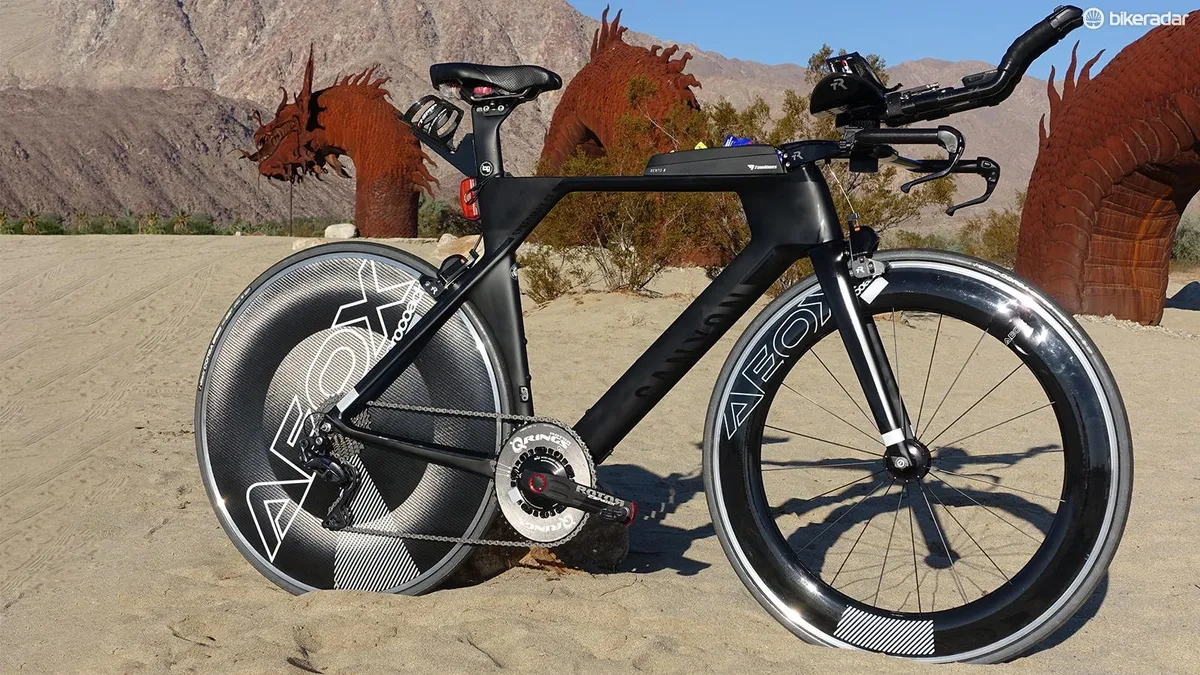
Thankfully Canyon agreed to help and sent along a Speedmax CF 8.0 Di2 as a long-term loaner. (See my review of the stock machine here). I also wanted to upgrade the stock bike, swapping out the stock bars and clip-ons, going with a 1x drivetrain and fitting a pair of Aerocoach’s new AEOX wheels.
With the bike decided upon and those changes in mind, I immediately contacted Ivan O’Gorman of IOG Fitting in Niwot, Colorado for help with my fit and advice on go-fast gear.
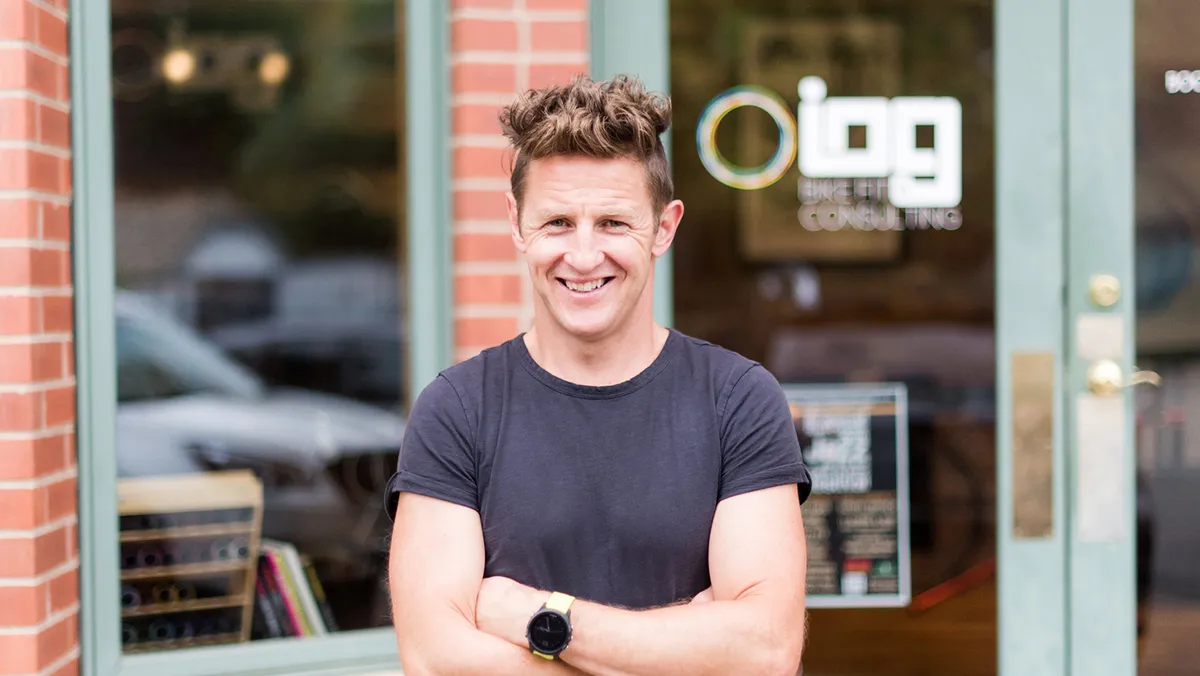
O’Gorman is an expert fitter with heaps of experience in the realm of triathlon and time trial positioning. He’s also no slouch of an athlete, having raced at the Ironman World Championships on seven consecutive occasions.
O’Gorman keeps himself up to speed on all the latest aero gear and brings a practical but aggressive approach to bike set up and prep. That he serves a great espresso and is a gem of a guy is simply icing on the cake.
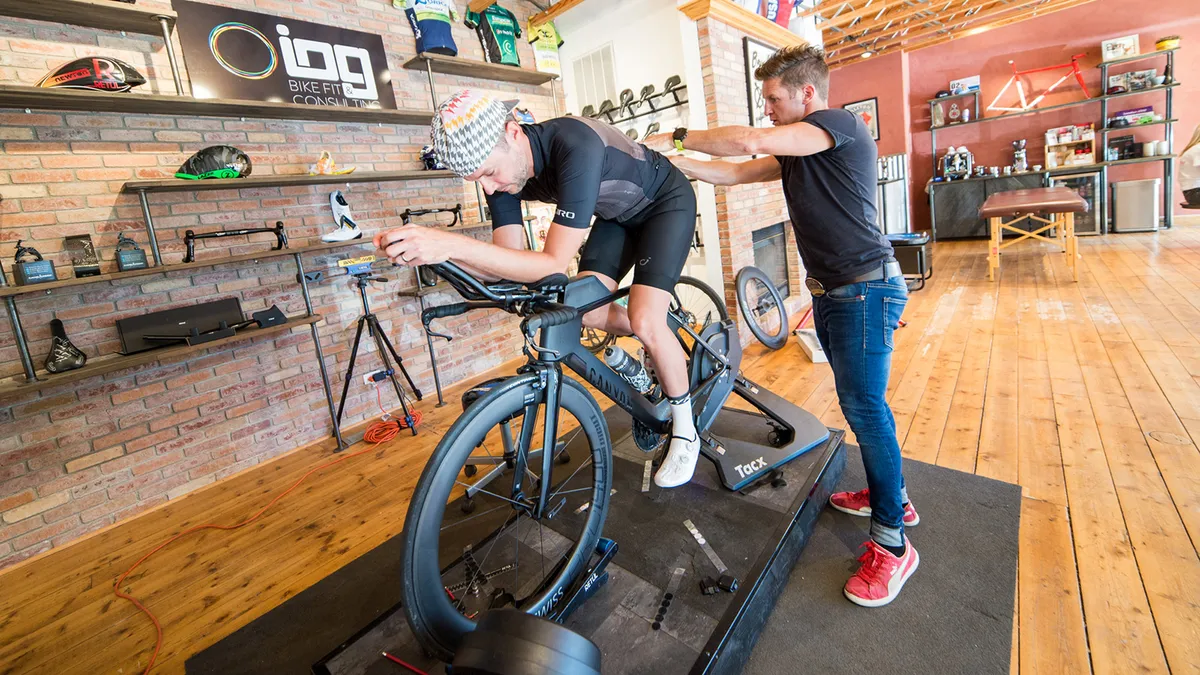
Ivan and I discussed the racecourse, expected conditions, my aspirations, and then spent several hours using Retul and Leomo motion capture systems to record my position and further refine it.
O’Gorman didn’t make drastic changes to the position I came to on my own, but the small adjustments he suggested brought increased efficiency and comfort.
TriRig Alpha One aerobars and Omega X brakes
With O’Gorman’s input I contacted TriRig’s Nick Salazar for a sample of his new Alpha One integrated aerobars. This wasn’t just about getting a more aerodynamic set up for the front end of the Canyon. TriRig’s Alpha One also provides a wide range of adjustment.
Of particular interest is the central mast construction and the ability to raise and lower the aerobars with a single 4mm Allen key.
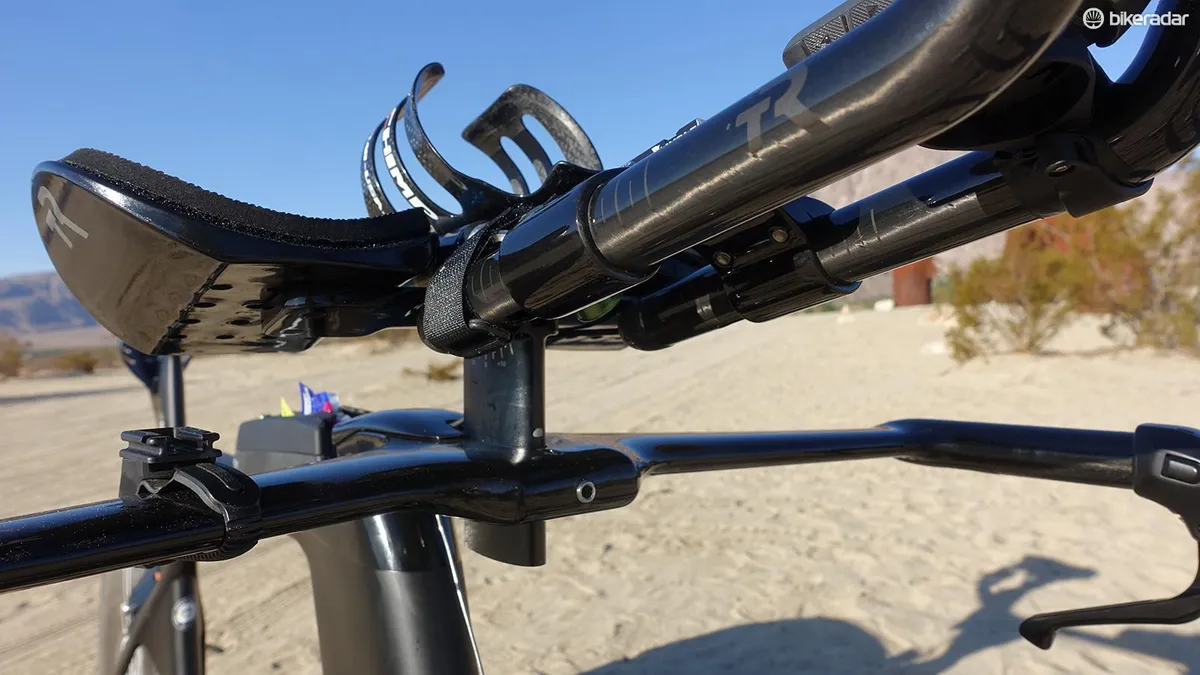
In fact, late in the race I did raise my aerobars a few millimeters to reduce pressure on my neck and ease some saddle discomfort. The adjustment was quick, didn’t significantly delay me in any way, and brought some relief to my neck.
TriRig also installed a pair of Omega brakes to save a few watts over the stock Shimano stoppers
While a good, tidy aero setup, the Alpha Ones are a bit flexible in the extensions. I have to point to the central mast here as the likely culprit. When I mentioned this to Salazar, he thought the flex may have more to do with the carbon fiber extension holder assembly.
Again, the bars are clearly designed with aerodynamics in mind, but with such a narrow structure supporting the entire extension and armrest assembly there is bound to be movement.
The other drawback to the Alpha One is the extremely tight confines of the integrated stem. Salazar claims that there’s room enough for a Di2 junction box and both front and rear brake cables. It’s true that it can be done, but the risk of crimping a wire is high and extreme care must be taken each time you remove the stem’s top cap to charge the battery or adjust shifting.
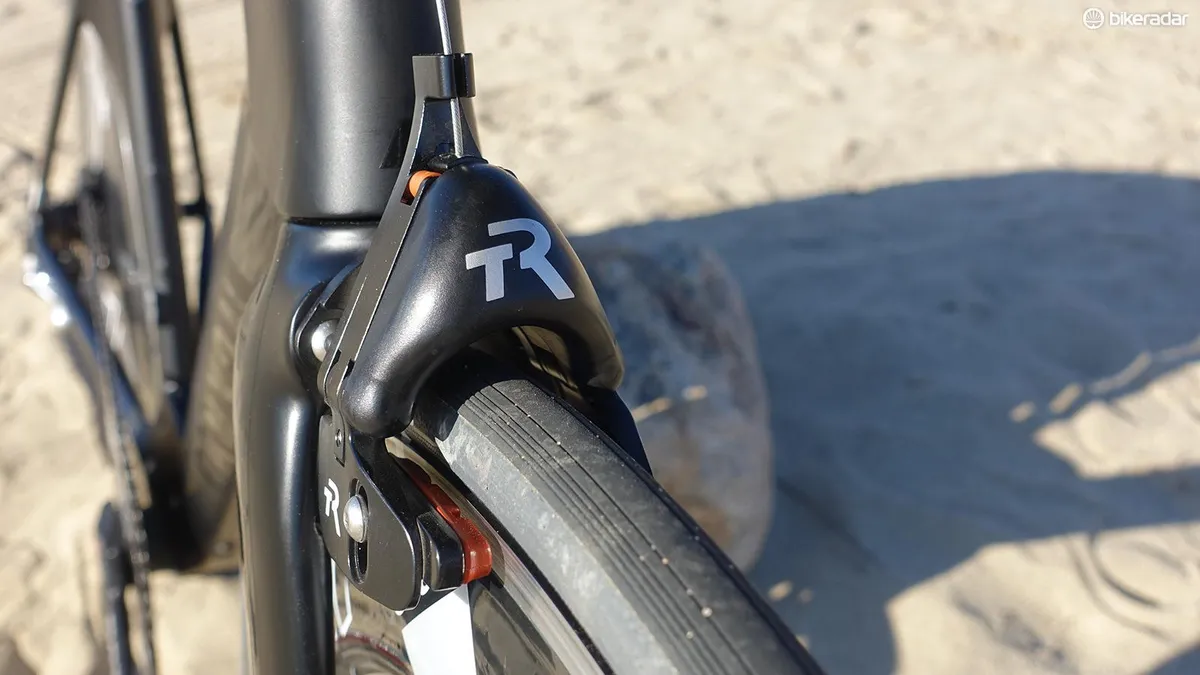
I would like to have seen a bit more room in there in the name of user-friendliness.
TriRig also installed a pair of Omega brakes to save a few watts over the stock Shimano stoppers. These are a known quantity in the aero crowd and with good reason. They do tidy up a bike and still provide more than adequate stopping power.
They also make traveling with a bike easy because the central actuating block can be removed from the brake with the cable still installed.
Rotor 2inPower power meter and 1x 50t Q ring
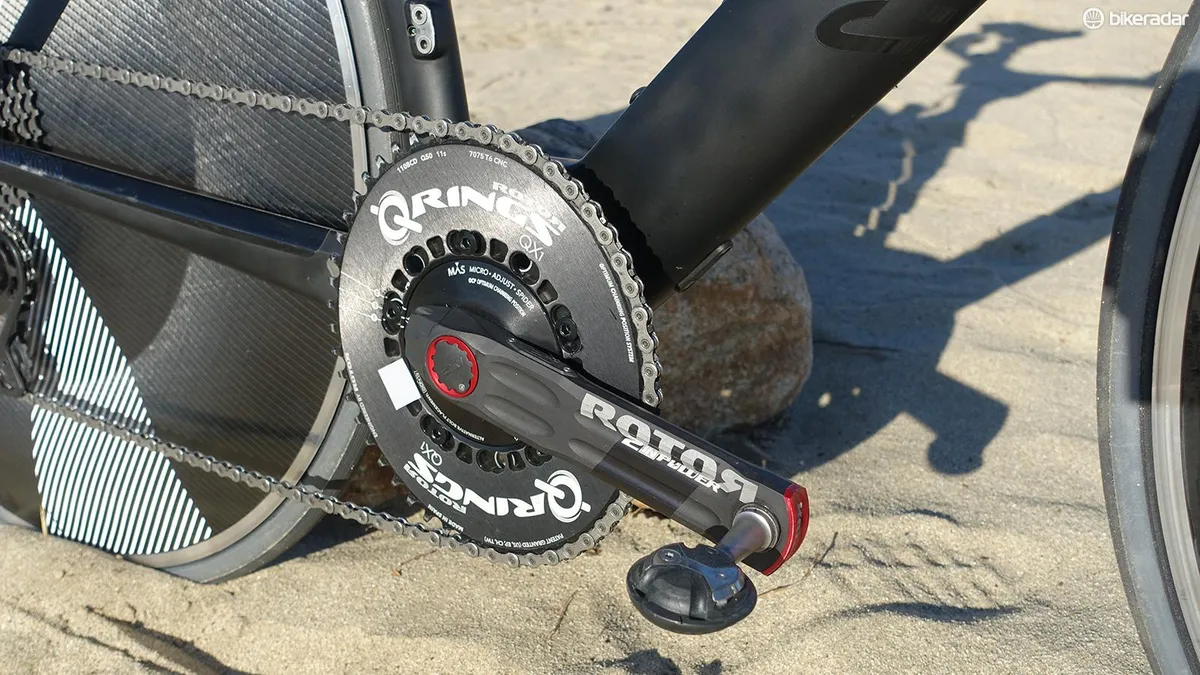
One of the only complaints I had about the Canyon in stock form was its long, 175mm crank. Rotor came to the rescue with a set of 165mm 2inPower crankarms. The shorter crank helped decrease my hip angle while also allowing me to monitor my power output during the fit process, training and racing.
While Rotor offers a 1x specific spider, I stuck with the 2x spider because it kept the chainline straight in the gears that I used most frequently during the time trial
The ability to look at left/right power balance was super cool and the crank worked perfectly throughout my time using it. It paired easily to my Wahoo Elemnt Bolt and provided reliable, consistent data.
It is charged via a magnetic connection on the driveside and a Rotor-specific USB charging cord. Battery life is great. I only charged it three times during the months I had it and one of those was probably unnecessary.
Another change I wanted to make was going 1x on the Canyon’s drivetrain. On a course as flat as the one used in Borrego Springs, there is no need for a low climbing gear. And ridding the bike of a chainring, front derailleur and hanger saves a few watts of drag.
While Rotor offers a 1x specific spider, I stuck with the 2x spider because it kept the chainline straight in the gears that I used most frequently during the time trial.
Rotor provided one of its excellent 1x specific, 50-tooth Q rings. This gave me plenty of range once I paired it with a Shimano Dura-Ace 11-30 cassette. I stuck with the stock Shimano Ultegra R8050 GS rear derailleur despite having an Ultegra RX clutch derailleur on another bike in my garage. I shortened the chain a few links and never experienced a single dropped chain.
- Shimano Ultegra R8000 groupset review
- Shimano Ultegra R8000 and Ultegra Di2 R8070: all you need to know
AeroCoach AEOX 75 front wheel and carbon tubeless disc
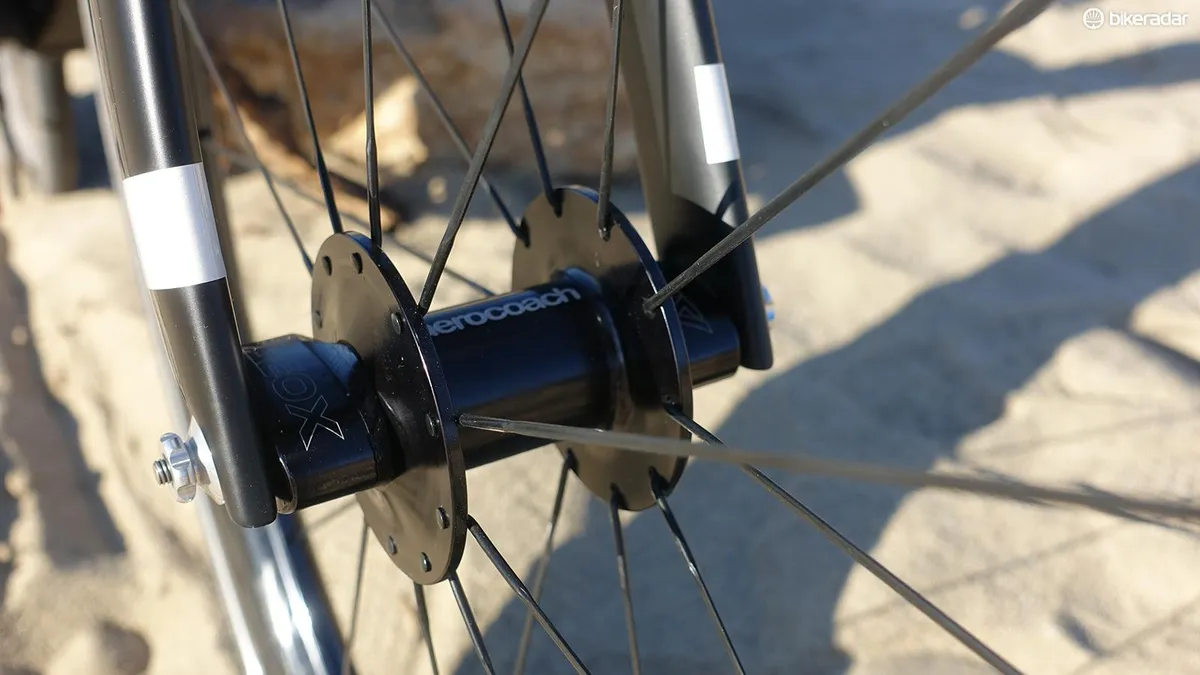
For wheels, I wanted to have a look at the latest from Xavier Disley and AeroCoach. The new AEOX line of wheels is intriguing thanks to the vast experience of Disley and co. and because of their relative affordability.
They also appealed due to their tubeless compatibility and AeroCoach’s recommended use of Vittoria’s Corsa Speed Open tire. The Corsa Speed is a personal favorite and sits as one of the lowest rolling resistance options on the market.
Up front I used the AEOX 75 wheel. While a deeper 100mm version is also offered I wanted the increased stability of the shallower wheel for my 12-hour effort.
Both options use AEOX’s fetching front hub with its narrowed, high-flange design and profiled axle caps. The tire’s tubeless valve is entirely hidden inside the rim and is accessed via a cutout in the side of the rim, much like a disc wheel. This means you can use a shorter valve, save the weight and imbalance of an extension, and keep it all hidden from the wind.
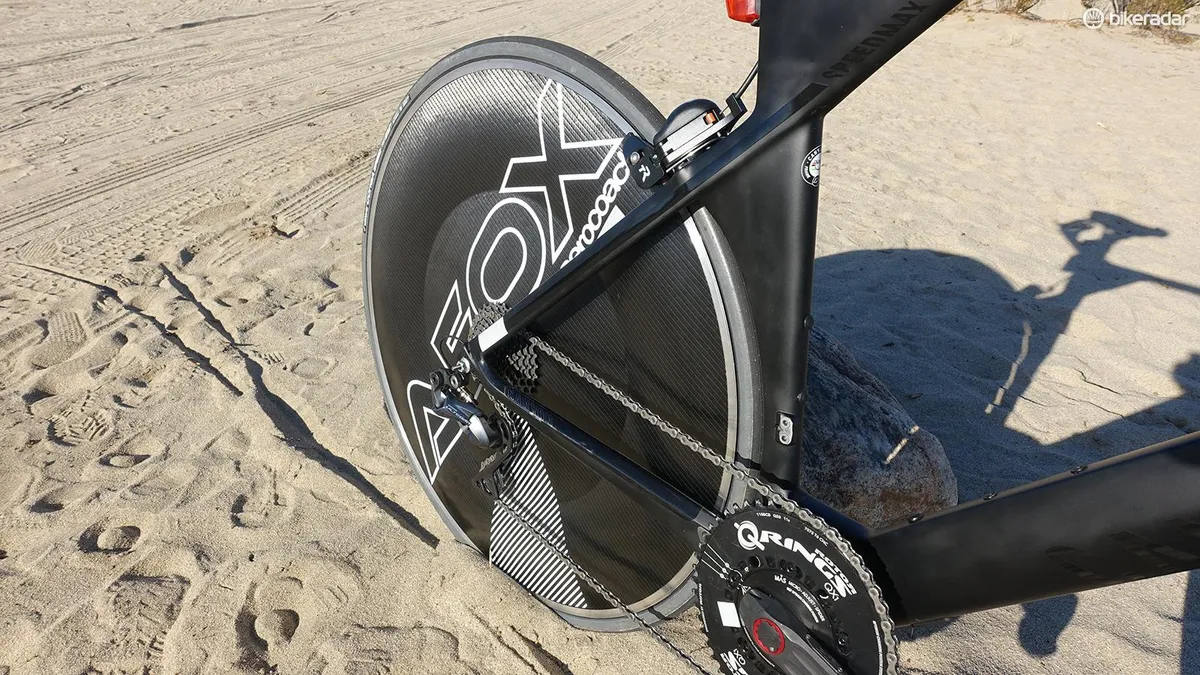
At the back, I used AEOX’s carbon fiber tubeless disc. It is the pricier version of the first AEOX tubeless disc, costing an additional 260 British pounds but saving 210 grams. It uses a steel-spoke internal construction and a pair of shaped carbon covers that are permanently attached at the hub and rim.
Careful set up is required to run the disc because the clearances between the largest cog and the surface of the cover are tight. AeroCoach supplies thin spacers to move the cassette outboard and create space to use the largest cog, but I simply limited my derailleur to keep it from shifting into the 30-tooth cog and rubbing.
This left me with a 50-27 low gear, which was adequate for my needs. It’s also worth noting that both wheels carry a 100kg rider weight limit.
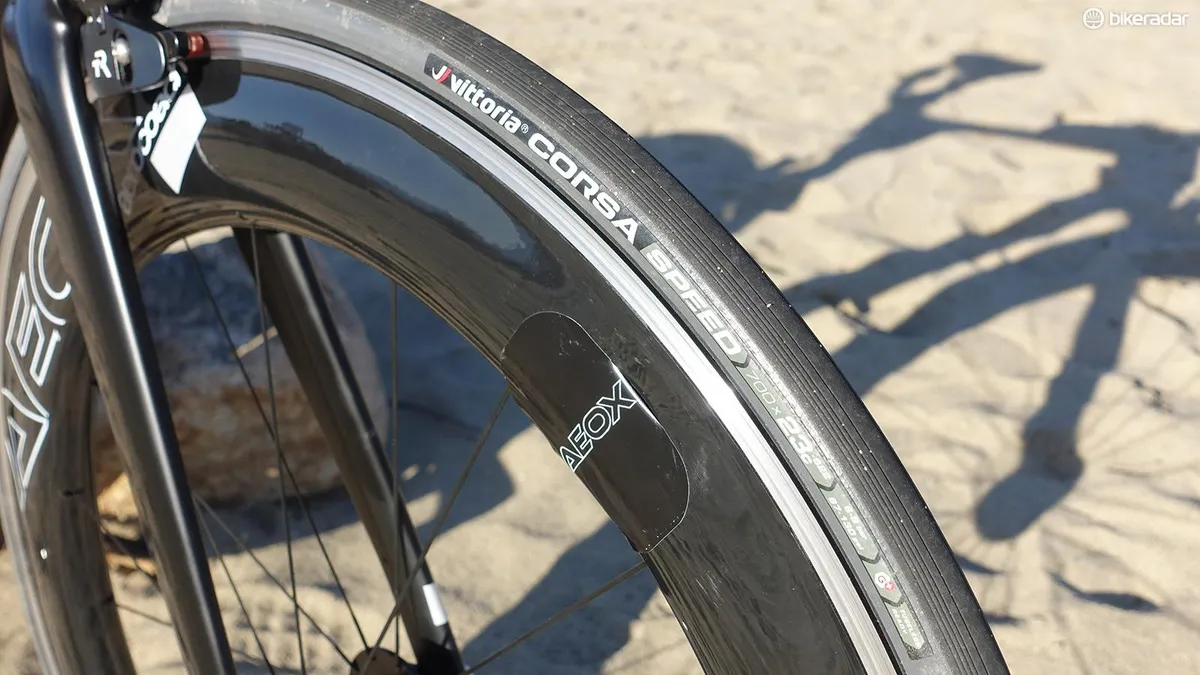
Thankfully, the exceptional speed and stability of both wheels more than made up for any cassette clearance issues. The tubeless tires kept me carefree even when some glass was found on the course. And best of all, the roar of the AEOX wheels is phenomenal. Many racers could hear me approaching before I could even say hello.
I also want to thank HED for sending out a Jet 6 Plus that I used as a spare wheel and in case of strong winds. It too is tubeless compatible, wonderfully quick and surprisingly stable, even in strong winds.
NoPinz/AeroCoach Tripsuit, AeroCoach AttackSpeed gloves and Trip Overshoes

With the bike dialed, it was also important to ensure that I was as aerodynamic as possible.
A tight, well-fitting skinsuit can have a greater impact on your overall drag than many cyclists realize. The rider represents 75 to 90 percent of the aerodynamic drag of the rider/bike combo.
To complement the Tripsuit, I also used AeroCoach’s AttackSpeed gloves and Trip Overshoes
AeroCoach helped here sending along a NoPinz/AeroCoach Tripsuit. Designed using computational fluid dynamics and employing aero trip strips, the Tripsuit is offered in a range of sizes but also with either a “closed” or “open” designation.
These terms allude to the width of your arms when on the aerobar extensions and that position helps determine the placement of trip strips on the suit. This clever take on optimizing a skinsuit for the general population is unique to my knowledge.
The Tripsuit also has an integrated number pocket. Unfortunately I wasn’t able to use it because racers at the 6-12-24 World TT Champs are required to wear their number on the right side.
To hold my phone (racers are required to carry one while racing), I pinned a sunglasses bag to the inside of the skinsuit. I placed my phone in a plastic bag, slipped it into the sunglasses bag, and ran an earbud to my right ear so I could listen to music while I raced (this is allowed).
To complement the Tripsuit, I also used AeroCoach’s AttackSpeed gloves and Trip Overshoes. These were aero, comfortable and kept more of my skin away from the sun’s rays.
Julbo Aerospeed sunglasses
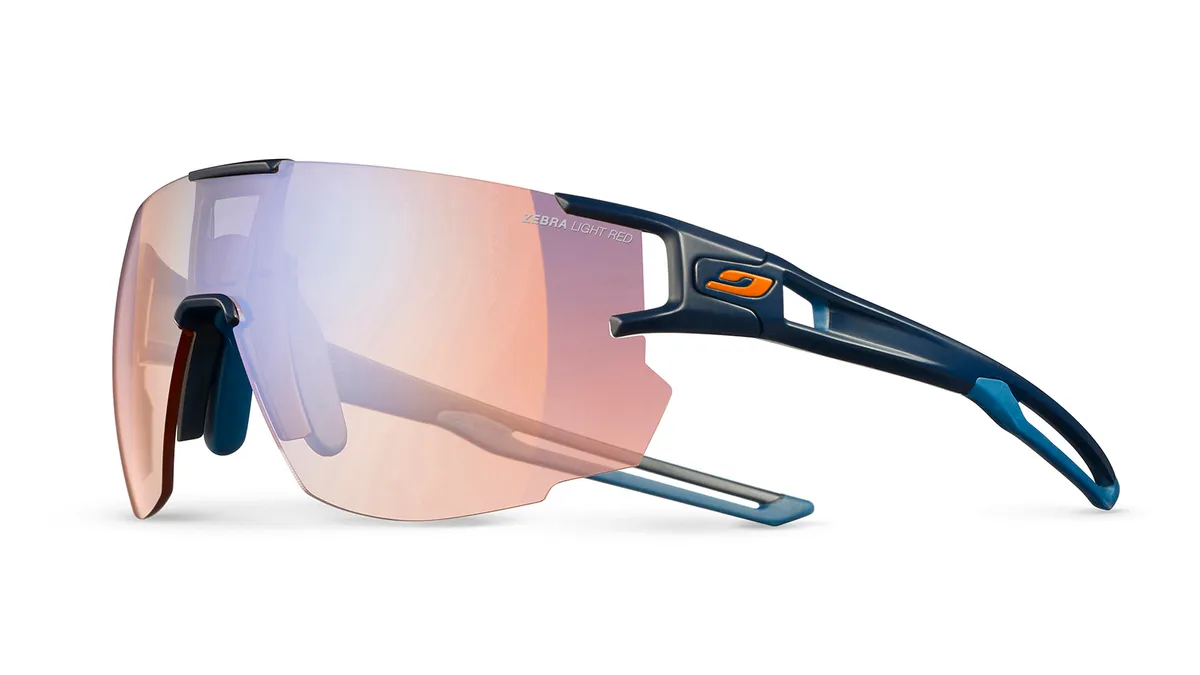
While I raced the first 108 miles in a POC Cerebel time trial helmet, I switched to a Specialized Evade II after that to keep from overheating.
With the Evade II I wore a pair of Julbo Aerospeed sunglasses with a Reactiv Photochromic lens. I wore the same model during my time on Tour Divide this year and I love the big windshield of a lens and the fact that it adapts so well to changing light conditions.
During the darkest of night riding and the brightest of desert conditions, the lens keeps you seeing clearly thanks to perfect optics. The adjustable nosepiece and rubberized ear stems keep them in place even when soaked in sweat. That the Julbos are also less expensive than many eyewear competitors is another upside to the French brand.
Science in Sport Beta Fuel
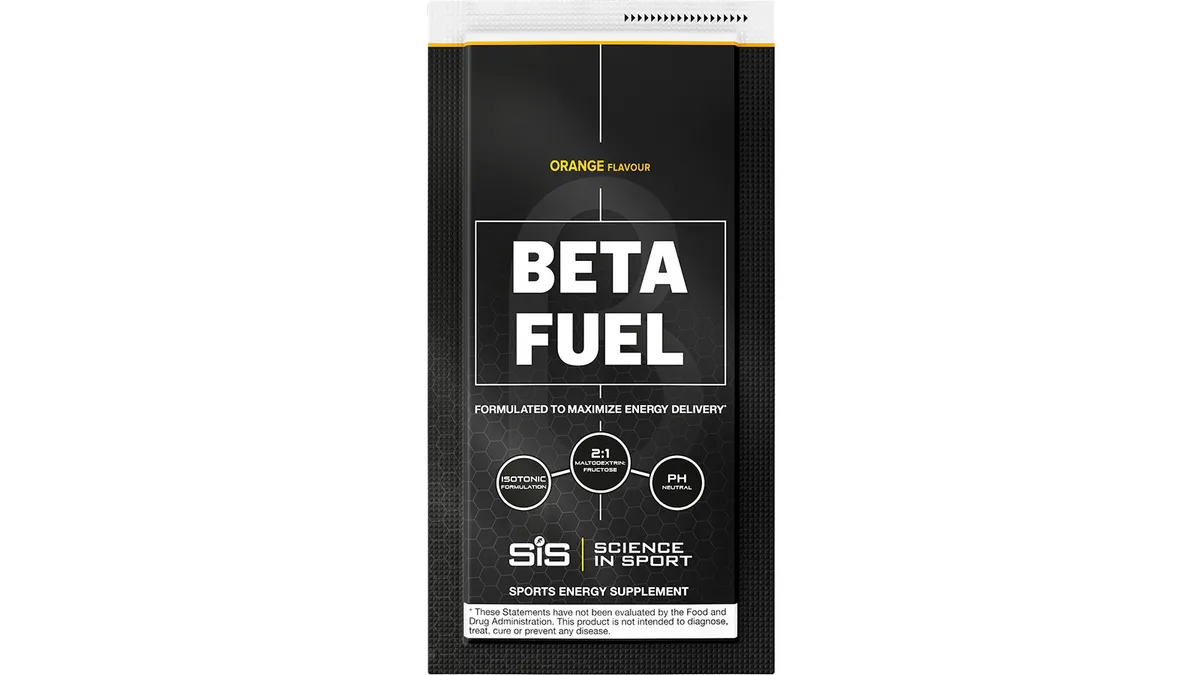
Fueling 12 hours of riding is a tricky business. It’s just as easy to overdo calories and hydration as it is to underdo it. The last time round it was a bad gut that marked the low point of my race.
Science in Sport’s new Beta Fuel drink mix is specifically formulated for events over three hours in length. Employing both fructose and glucose, Science in Sport claims that the combination allows an athlete to absorb 90 grams of carbohydrate per hour instead of 60 grams with glucose alone. For those with specific dietary needs, it’s worth noting that Beta Fuel is vegan, gluten-free, lactose-free, wheat-free, nut-free, and safe for those with coeliac.
Two years ago I managed 235 miles. This time round I upped it to 258 miles
After using the admittedly syrupy strong elixir during my long training rides, I certainly found success with Beta Fuel. I never experienced GI distress and I also appreciated that with each bottle I got down I was consuming 321 calories and 570 milligrams of salt. Essentially, this is all I needed to consume on an hourly basis.
During the race, I supplemented the Beta Fuel with a smattering of SiS GO Energy Gels, some with caffeine, some without. On two occasions I tried a bit of solid food, the first time a waffle, a banana on the second try. Each time I immediately regretted the attempt. From then on I stuck to gels and Beta Fuel.
Late in the race, as temperatures hit the 90s Fahrenheit, I also drank a few bottles of Skratch Labs Exercise Hydration Mix. It was a welcome break from the thicker Beta Fuel. But it also meant that I needed to increase my consumption of gels.
On the whole, I wouldn’t hesitate to race again on an entirely liquid diet. Science in Sport’s Beta Fuel and GO Gels pair together nicely. On a hot day, it is nice to cleanse your pallet from time to time with plain water or a lighter concentration drink. But I also found that by stuffing an ice sock down the back my skinsuit and dowsing my torso, arms, and legs with water I cooled off quickly and was able to get back on the higher calorie mixture.
Ultimately, you’ll want to experiment during your training, but if you’re looking for a high calorie drink option, I highly recommend Beta Fuel.
So how did it go?
Well, signing up for another round of 12-hour punishment paid off. I went faster, and farther as a result, by an appreciable margin.
Two years ago I managed 235 miles. This time round I upped it to 258 miles, averaging 21.8 miles per hour over the 12 hours. That distance also put me on the podium in third place.
The competition was fierce this year with Canada’s James McNaugton covering a massive 285.6 miles to take the 12-hour overall title. Behind him, the difference in distance between second and fifth place was a narrow 9.6 miles.
I’m certain that the increased time on the Canyon prior to the race had me transmitting more power to the pedals. Simultaneously, my time with Ivan O’Gorman meant that I was going faster for the same effort than I was two years ago.
I was truly delighted to be on the podium but it was the process as much as the result that has me wondering if yet another go at the 12-hour World Time Trial Championships is in my future.
